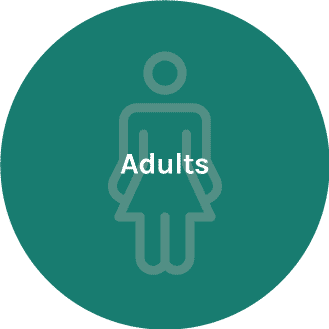Adult bracing

Adults with ASA may or may not have previously been diagnosed with adolescent scoliosis. ASA may be progressive or stable, depending on the individual case.
In those with a previous diagnosis of AIS monitoring progression is easy as comparison of current x-rays to adolescent x-rays can be done. In those where the scoliosis is discovered in adulthood, determining if the scoliosis is a pre-existing adolescent condition or a new onset of degenerative scoliosis can be difficult.
DDS usually develops in middle aged and older adults and is typically seen starting around 45 years of age onwards. Because DDS is a result of degenerative instability, it is almost always progressive. However the main complaint usually associated with DDS is lower back pain.
Pain and Adult Scoliosis
Although some forms of adult scoliosis can be progressive, the main complaint is usually lower back pain. Often this pain is severe and little relief has been found from usual medical and complementary care. A common misunderstanding still perpetuated by most health professionals is that scoliosis does not cause pain. This is not true. This notion has come about because the majority of children suffering from adolescent idiopathic scoliosis do not present with a primary complaint of pain and quite often even large deformities in children do not cause pain. However, in adults between the ages of 50 and 80 who suffer from chronic lower back pain, research shows that up 40% will have an adult scoliosis.
This misconception has led to a diagnostic and treatment approach that largely ignores the role of scoliosis in chronic lower pain in adults and, as a result, less than satisfactory outcomes for many of these patients.
The pain seen in adult scoliosis is not related to the size of the curve. Several good studies show there is little to no relationship between the size of the cuve and pain. i.e a 20 degree and a 55 degree curve have the same chance of causing pain in an adult. There are two key factors related to pain in adults.
1) Location of the curve. Almost all complaints of pain in adult scoliosis are of lower back pain. The majority of new DDS curve are lower back curves. It is rare for a single curve in the upper spine to cause lowe rback pain. However in some cases patients with ASA who have an “S” shaped curve, the bottom half of the curve in the lower back may cause pain as an adult.
2) Balance of the spine. What is meant by “balance” is the forward/backwards, left right/shift of the spine that does not necessarily related to the size of the curve. Most importantly adults with scoliosis who have a forward shifted posture, or those that are bent forward, will develop more pain than those in a neutral or backwards shifted posture.

